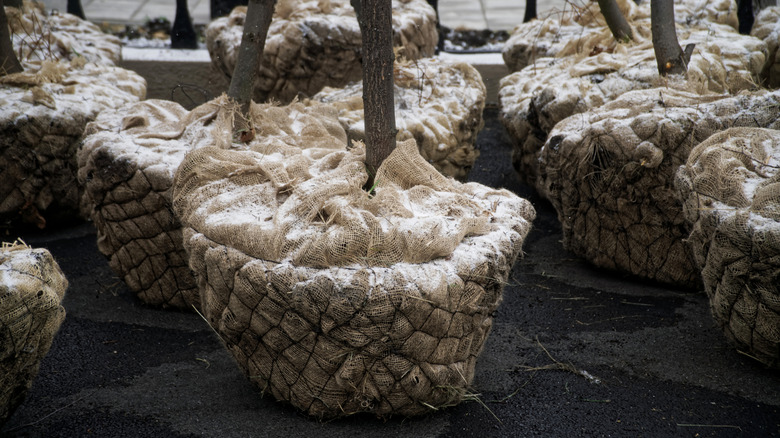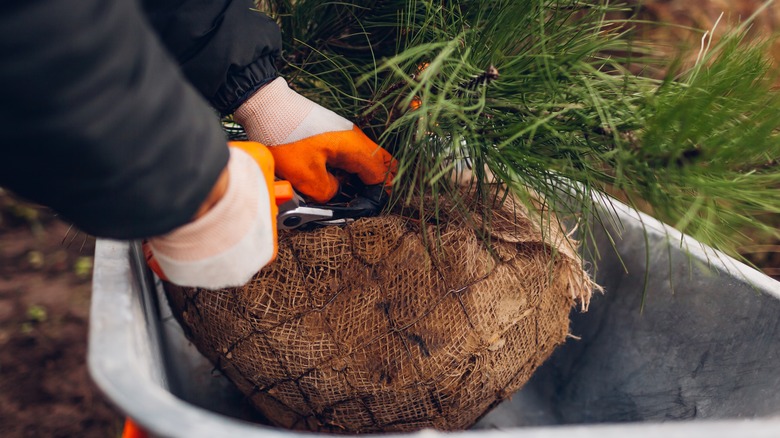Should Wire Baskets Be Removed From Trees Before Planting?
To remove the wire basket from your tree before planting or not to remove the wire basket? That is the question many gardeners ask themselves when planting B&B (balled and burlapped) trees. Does leaving the basket intact help prevent transplant shock and keep the root ball together, or does it negatively impact the health of your tree? As it turns out, the answer is: it depends, and it might matter less than you think.
The Purdue University Landscape Report frames this question as a matter of leaving the wire on for short-term transplanting success versus removing the wire for the tree's long-term health. But according to a 2021 study published in the Journal of Environmental Horticulture, "[researchers] found no differences in tree survival or growth five to six years after transplanting when trees were planted with wire baskets intact, partially removed or fully removed ... Moreover, wire basket removal or retention did not influence rooting strength when trees were pulled to assess whole-tree anchorage."
What to consider before removing the wire basket
As the Purdue University Landscape Report points out, "the research on the long-term success of plants with wire baskets left intact is mixed. This is most likely due to species and site differences." Purdue's general recommendation is to remove the top ⅓ of the wire basket. But before making a decision on whether to partially or fully remove your tree's wire basket, consider its species and where you're planting it.
If your tree is a speedier-growing species, like the fast-growing Robin red holly privacy tree or the Plains cottonwood (Populus deltoides monilifera) that flourishes in USDA zones 3 through 9, the wire may become enveloped in the roots as they grow. This could affect the tree's ability to grow a large and healthy root system.
What type of soil you're planting in matters, too. Leaving the wire basket intact provides stability, which then minimizes the need for staking. So if looking to successfully plant your tree in sandy soil, the extra stability could be helpful, but if you're planting in a denser soil like clay, it may be less necessary.
Pros and cons of removing the wire basket
Ultimately, whether you remove a B&B tree's wire basket is up to you, and there are pros and cons to both options. On the positive side, no wire means your tree's root system may have an easier time spreading out, which is crucial to the tree's long-term health and stability. It may also be the more eco-friendly option, since wire baskets can take up to 30 years to break down.
As for the cons, removing the wire basket may cause the root ball to loosen or break apart. If this happens, you're essentially planting a bare root plant, which comes with downsides you should be aware of before planting – namely, a higher risk of transplant shock and more necessary time and attention to ensure it grows properly. Losing the basket may also make lifting the tree more challenging; with a wire basket, trees can be lifted from the root ball instead of the trunk, which avoids damaging the trunk.
As previously mentioned, studies show that the decision to leave or remove wire baskets is not always make-or-break for a tree, and the general recommendation is a happy medium of removing the top ⅓ of the wire basket. With all this information in mind, you should be able to make a decision to help your B&B tree live its healthiest life!


